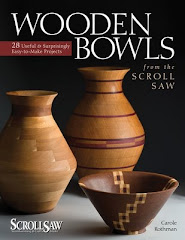Someone suggested that bronze wool might be worth looking into, so I did some research, bought some pads, and am waiting for an opportunity to use it. Although it does not come finer than a "fine" grade, it should be good for smoothing intermediate coats. The advantage, apparently is that it does not shred or rust, like steel wool. It's especially recommended for marine use, which makes sense.
I also found out that there is some oil in most regular steel wool, that is added to prevent rusting. One manufacturer specializes in "oil free" steel wool, since oily residues can interfere with some finishes. I had been storing steel wool pads with assorted bits of sandpaper, and wondered where the oily looking patches were coming from. Never occurred to me that the steel wool might be the culprit.
I may just give the oil free stuff a try, since it, too, is not supposed to shred. If you've ever tried to tack off those little steel fibers, you know that it's not fun. Finishing is enough of a chore as it is. Anything that makes it better and easier is certainly worth a shot!














